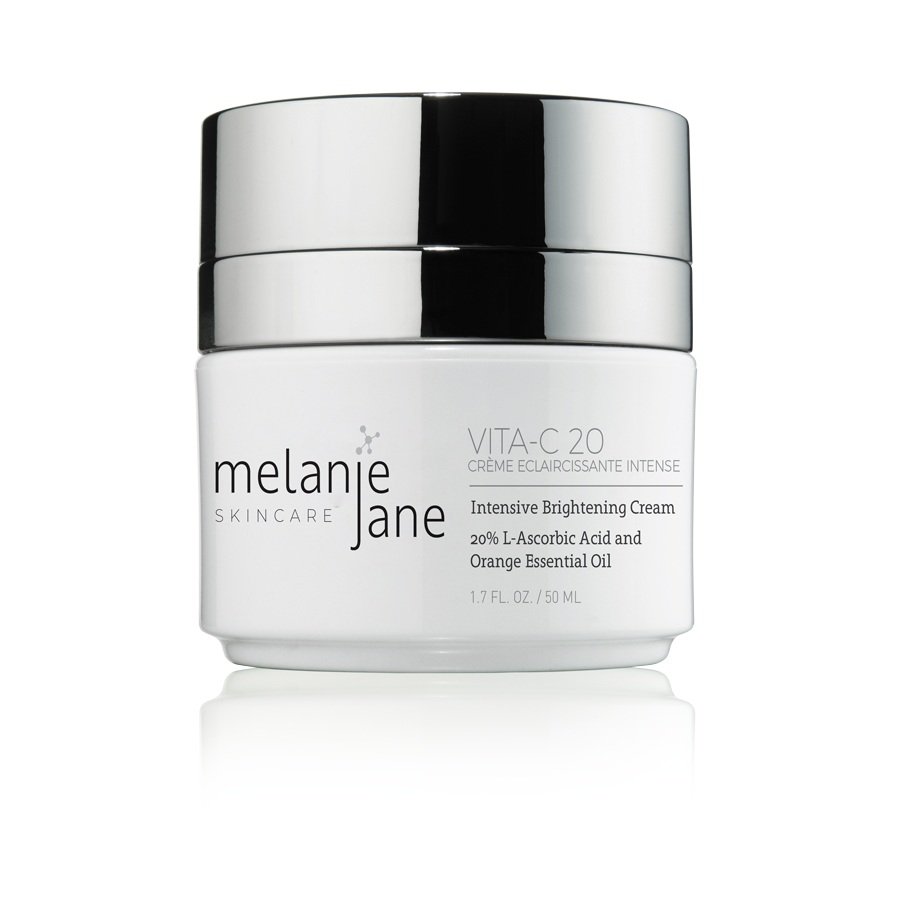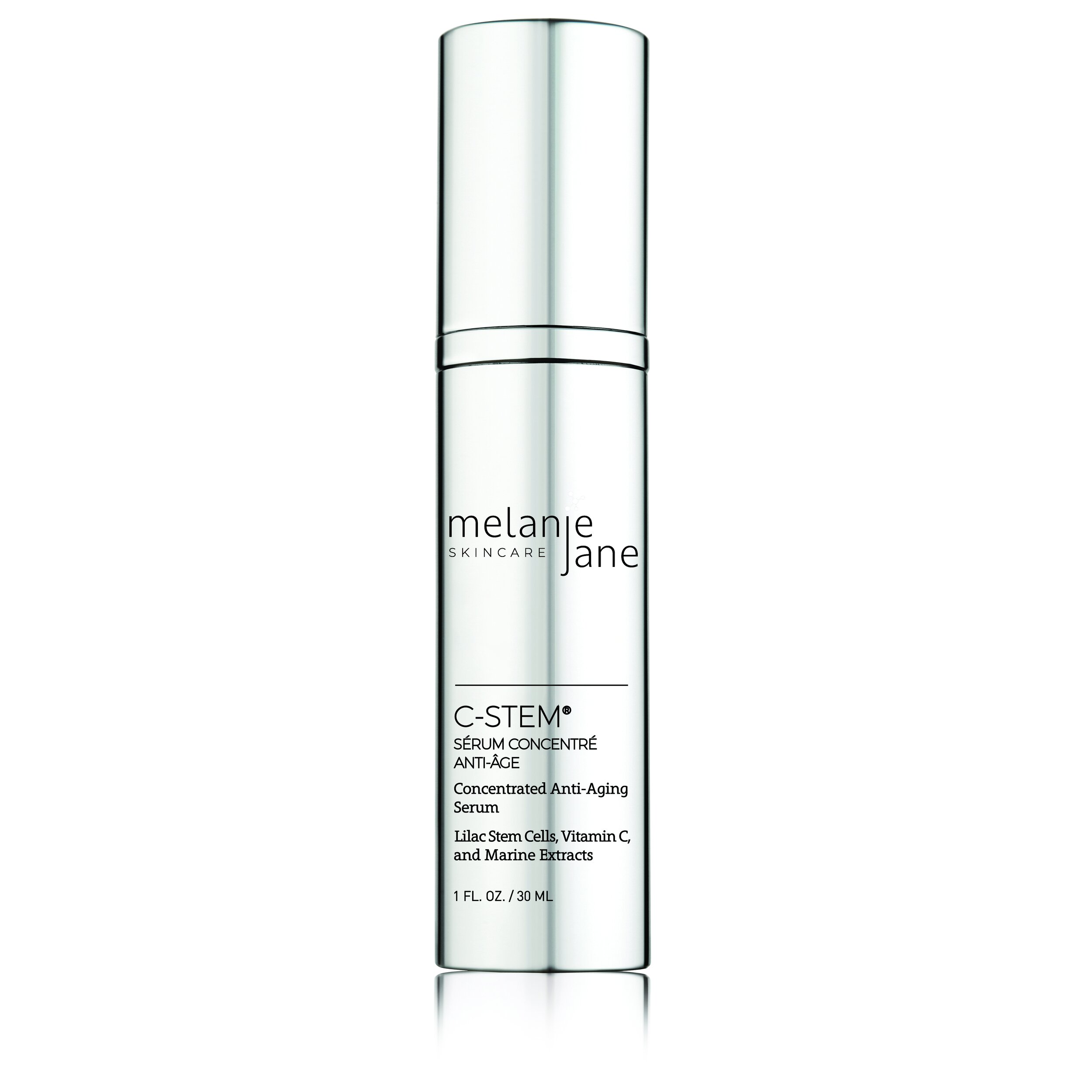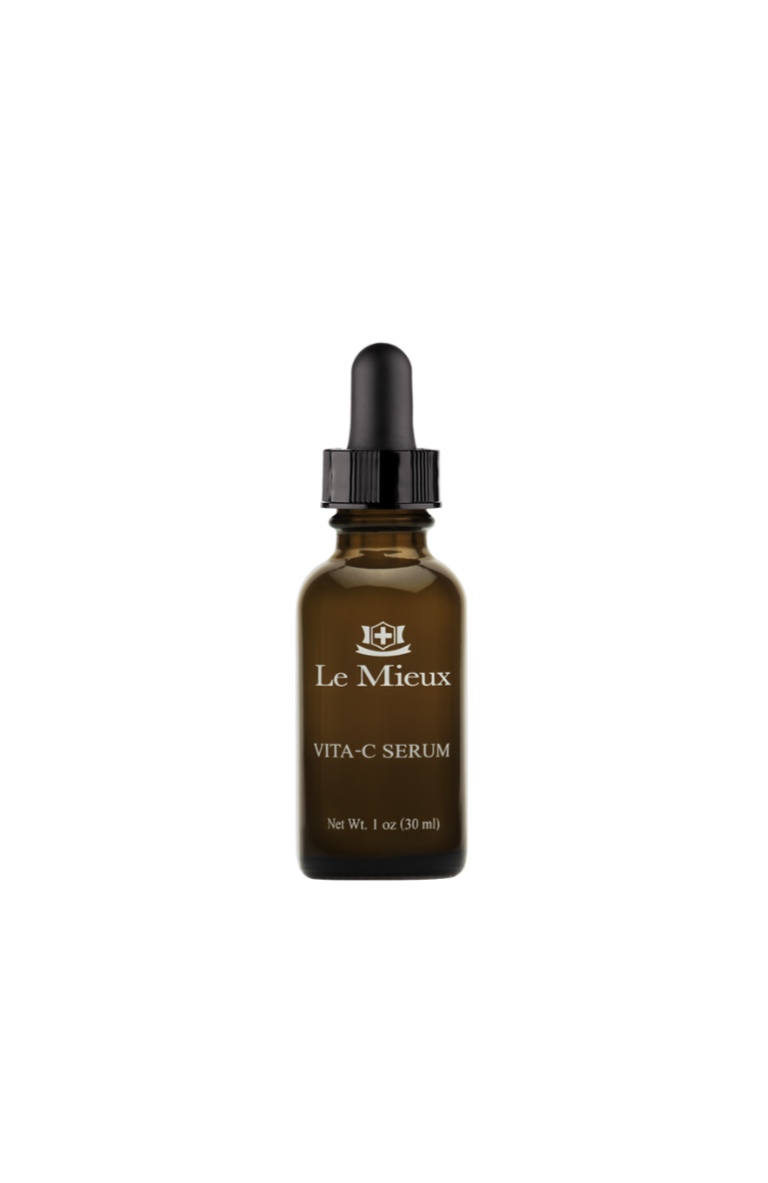How Vitamin C Works on the Skin
Vitamin C is a potent antioxidant. Environmental factors, such as solar radiation, pollution, and smoking, can accelerate damage to the skin through the generation of so-called “oxidative stress”. Vitamin C is one of the most potent antioxidants in the skin.
Protection Against Photoaging
Solar radiation leads to the formation of singlet oxygen. This triggers a cascade of events that lead to the formation of so-called free radicals. Free radicals are highly toxic, unstable molecules that can cause damage to nucleic acids, proteins, and cell membranes. These also trigger collagen degradation, reduce collagen production, and increase elastin accumulation. This leads to photoaging such as pigmentation, telangiectasias, coarse texture, deep wrinkles, and solar elastosis.
Sunscreens are only partially effective in blocking free radicals produced by UV exposure. Vitamin C has been shown to inhibit collagen damage.
and the biosynthesis of elastin.
Protection Against UV-induced Immunosuppression
Langerhans cells are antigen-presenting cells present in the epidermis that initiate a protective immune response. Their numbers decrease with acute and chronic UV exposure. Vitamin C-containing skincare has been shown to prevent the reduction of Langerhans cells upon UV radiation.
Protection Against Photocarcinogenesis
UV-induced erythema contributes to photocarcinogenesis. In addition, UV-induced free radicals induce mutations in genes, which affect the repair of DNA and induce a process of programmed cell death. An application of topical vitamin C has been shown to reduce UVB-induced erythema by 52 percent and apoptotic sunburn cell formation by 40 to 60 percent.
Antiaging Effect
Vitamin C is essential for collagen biosynthesis and is thought to have an anti-aging effect. More importantly, it serves as a cofactor for key enzymes that cross-link and stabilize collagen fibres. Vitamin C also stabilizes procollagen messenger RNA, which regulates Type I and III collagen synthesis. In addition, vitamin C increases the gene expression of collagen and the synthesis of the tissue inhibitor MMP-1, which decreases collagen degradation.
Replenisher of Vitamin E
Aside from its anti-aging and photoprotective effects, vitamin C is also known to be the primary replenisher of vitamin E. Vitamin E is an antioxidant and has a primary role in protecting cell membranes against oxidative stress and maintaining the collagen network in the skin. Similar to vitamin C, its levels are rapidly depleted after UV exposure. Several clinical studies have proved the synergistic antioxidant effect of vitamins C and E in photoprotection.
Antipigmentary Effect
Vitamin C also plays a role in pigment prevention. It interacts with copper ions and inhibits the action of the enzyme tyrosinase—the main enzyme responsible for the conversion of tyrosine into melanin—thereby decreasing melanin formation. A clinical study examining the effect of a topical formulation containing 25-percent vitamin C reported a significant decrease in pigmentation caused by melasma after 16 weeks.
REFERENCES
1. Manela-Azulay M, Bagatin E. Cosmeceuticals vitamins. Clin Dermatol. 2009;27:469–474. [PubMed] [Google Scholar]
2. Zetterströ M R. Nobel Prize 1937 to Albert von Szent-Györgyi: identification of vitamin C as the anti-scorbutic factor. Acta Paediatr. 2009;98(5):915–919. [PubMed] [Google Scholar]
3. Farris PK. Cosmetical vitamins: vitamin C. In: Draelos ZD, Dover JS, Alam M, editors. Cosmoceuticals. Procedures in Cosmetic Dermatology. 2nd ed. New York: Saunders Elsevier; 2009. pp. 51–56. [Google Scholar]
4. Pinnell SR, Yang H, Omar M, et al. Topical L-ascorbic acid: percutaneous absorption studies. Dermatol Surg. 2001;27(2):137–142. [PubMed] [Google Scholar]
5. Lin FH, Lin JY, Gupta RD, et al. Ferulic acid stabilizes a solution of vitamins C and E and doubles its photoprotection of skin. J Invest Dermatol. 2005;125(4):826–832. [PubMed] [Google Scholar]
6. Lupo MP. Antioxidants and vitamins in cosmetics. Clin Dermatol. 2001;19:467–473. [PubMed] [Google Scholar]
7. Tyrrell RM. Solar ultraviolet A radiation: an oxidizing skin carcinogen that activates heme oxygenase-1. Antioxid Redox Signal. 2004;6(5):835–840. [PubMed] [Google Scholar]
8. Godic A, Poljšak B, Adamic M, Dahmane R. The role of antioxidants in skin cancer prevention and treatment. Oxid Med Cell Longev. 2014;2014:860479. [PMC free article] [PubMed] [Google Scholar]
9. Hanson KM, Simon JD. Epidermal transurocanic acid and the UV-A-induced photoaging of the skin. Proc Natl Acad Sci. 1998;95:10576–10578. [PMC free article] [PubMed] [Google Scholar]
10. Chen L, Hu JY, Wang SQ. The role of antioxidants in photoprotection: a critical review. J Am Acad Dermatol. 2012;67(5):1013–1024. [PubMed] [Google Scholar]
11. Farris PK. Topical vitamin C: a useful agent for treating photoaging and other dermatologic conditions. Dermatol Surg. 2005;31(7 Pt 2):814–817. [PubMed] [Google Scholar]
12. Bissett DL, Chatterjee R, Hannon DP. Photoprotective effect of superoxide-scavenging antioxidants against ultraviolet radiation-induced chronic skin damage in the hairless mouse. Photodermatol Photoimmunol Photomed. 1990;7:56–62. [PubMed] [Google Scholar]
13. Fitzpatrick RE, Rostan EF. Double-blind, half-face study comparing topical vitamin C and vehicle for rejuvenation of photodamage. Dermatol Surg. 2002;28(3):231–236. [PubMed] [Google Scholar]
14. Humbert PG, Haftek M, Creidi P, et al. Topical ascorbic acid on photoaged skin. Clinical, topographical and ultrastructural evaluation:double-blind study vs. placebo. Exp Dermatol. 2003;12(3):237–244. [PubMed] [Google Scholar]
15. McArdle F, Rhodes LE, Parslew R, Jack CI, Friedmann PS, Jackson MJ. UVR-induced oxidative stress in human skin in vivo: effects of oral vitamin C supplementation. Free Radic Biol Med. 2002;33(10):1355–1362. [PubMed] [Google Scholar]
16. Toyoda M, Bhawan J. Ultrastructural evidence for the participation of Langerhans cells in cutaneous photoaging processes: a quantitative comparative study. J Dermatol Sci. 1997;14:87–100. [PubMed] [Google Scholar]
17. Matsui MS, Hsia A, Miller JD, et al. Non-sunscreen photoprotection: antioxidants add value to a sunscreen. J Investig Dermatol Symp Proc. 2009;14(1):56–59. [PubMed] [Google Scholar]
18. Meplan C, Richard MJ, Hainaut P. Redox signaling and transition metals in the control of the p53 pathway. Biochem Pharmacol. 2000;59:25–33. [PubMed] [Google Scholar]
19. Darr D, Combs S, Dunston S, Manning T, Pinnell S. Topical vitamin C protects porcine skin from ultraviolet radiation-induced damage. Br J Dermatol. 1992;127:247–253. [PubMed] [Google Scholar]
20. Murray JC, Burch JA, Streilein RD, Iannacchione MA, Hall RP, Pinnell SR. A topical antioxidant solution containing vitamins C and E stabilized by ferulic acid provides protection for human skin against damage caused by ultraviolet irradiation. J Am Acad Dermatol. 2008;59(3):418–425. [PubMed] [Google Scholar]
21. Oresajo C, Stephens T, Hino PD, et al. Protective effects of a topical antioxidant mixture containing vitamin C, ferulic acid, and phloretin against ultraviolet-induced photodamage in human skin. J Cosmet Dermatol. 2008;7:290–297. [PubMed] [Google Scholar]
22. Lin JY, Selim MA, Shea CR, et al. UV photoprotection by combination topical antioxidants vitamin C and vitamin E. J Am Acad Dermatol. 2003;48:866–874. [PubMed] [Google Scholar]
23. Lin FH, Lin JY, Gupta RD, et al. Ferulic acid stabilizes a solution of vitamins C and E and doubles its photoprotection of skin. J Invest Dermatol. 2005;125:826–832. [PubMed] [Google Scholar]
24. Austria R, Semenzato A, Bettero A. Stability of vitamin C derivatives in solution and topical formulations. J Pharm Biomed Anal. 1997;15(6):795–801. [PubMed] [Google Scholar]
25. Lee S, Lee J, Choi YW. Skin permeation enhancement of Ascorbyl palmitate by lipohydro gel formulation and electrical assistance. Bio Pharma Bull. 2007;30:393–396. [PubMed] [Google Scholar]
26. Ando H, Kondoh H, Ichihashi M, Hearing VJ. Approaches to identify inhibitors of melanin biosynthesis via the quality control of tyrosinase. J Invest Dermatol. 2007;127:751–761. [PubMed] [Google Scholar]
27. Kameyama K, Sakai C, Kondoh S, et al. Inhibitory effect of magnesium L-ascorbyl-2-phosphate (VC-PMG) on melanogenesis in vitro and in vivo. J Am Acad Dermatol. 1996;34:29–33. [PubMed] [Google Scholar]
28. Hwang SW, Oh DJ, Lee D, Kim JW, Park SW. Clinical efficacy of 25% L-ascorbic acid (C’ensil) in the treatment of melisma. J Cutan Med Surg. 2009;13(2):74–81. [PubMed] [Google Scholar]
29. Espinal-Perez LE, Moncada B, Castanedo-Cazares JP. A double- blind randomized trial of 5% ascorbic acid vs. 4% hydroquinone in melasma. Int J Dermatol. 2004;43(8):604–607. [PubMed] [Google Scholar]
30. Telang PS. Vitamin C in dermatology. Indian Dermatol Online J. 2013;4(2):143–146. [PMC free article] [PubMed] [Google Scholar]
31. Lee WR, Shen SC, Kuo-Hsien W, Hu CH, Fang JY. Lasers and microdermabrasion enhance and control topical delivery of vitamin C. J Invest Dermatol. 2003;121(5):1118–1125. [PubMed] [Google Scholar]
32. Ebihara M, Akiyama M, Ohnishi Y, Tajima S, Komata K, Mitsui Y. Iontophoresis promotes percutaneous absorbtion of L-ascorbic acid in rat skin. J Dermat Sci. 2003;32:217–222. [PubMed] [Google Scholar]
33. Sung YK, Hwang SY, Cha SY, et al. The hair growth promoting effect of ascorbic acid 2-phosphate, a long-acting Vitamin C derivative. J Dermatol Sci. 2006;41(2):150–152. [PubMed] [Google Scholar]
34. Kwack MH, Shin SH, Kim SR, et al. I-Ascorbic acid 2-phosphate promotes elongation of hair shafts via the secretion of insulin-like growth factor-1 from dermal papilla cells through phosphatidylinositol 3-kinase. Br J Dermatol. 2009;160(6):1157–1162. [PubMed] [Google Scholar]
35. Jagetia GC, Rajanikant GK, Mallikarjun Rao KV. Ascorbic acid increases healing of excision wounds of mice whole body exposed to different doses of gamma-radiation. Burns. 2007;33(4):484–494. [PubMed] [Google Scholar]
36. Findik RB, Hascelik NK, Akin KO, Unluer AN, Karakaya J. Striae gravidarum, vitamin C and other related factors. Int J Vitam Nutr Res. 2011;81(1):43–48. [PubMed] [Google Scholar]
37. Yun IS, Yoo HS, Kim YO, Rah DK. Improved scar appearance with combined use of silicone gel and vitamin C for Asian patients: a comparative case series. Aesthetic Plast Surg. 2013;37(6):1176–1181. [PubMed] [Google Scholar]





